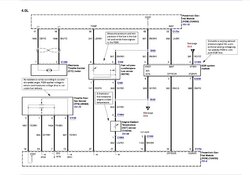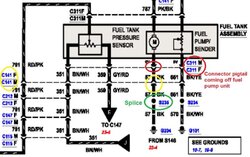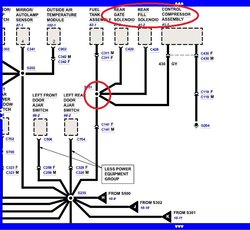2000StreetRod
Moderator Emeritus
- Joined
- May 26, 2009
- Messages
- 10,597
- Reaction score
- 334
- City, State
- Greenville, SC
- Year, Model & Trim Level
- 00 Sport FI, 03 Ltd V8
The Aeromotive Stealth 340 high flow fuel pump I installed for my M90 supercharger installation has a capacity (340 liters per hour) that greatly exceeds the demands of my SOHC V6.

During normal driving most of the pumped fuel is returned to the fuel tank via the intank fuel pressure regulator bypass hose.

On the 3rd generation Explorers Ford implemented an electronic fuel pressure controller to reduce fuel vapor from excess fuel bypass. The system consists of a rail mounted fuel pressure/temperature sensor,

that provides data to the PCM and a PCM controlled fuel pump driver module (FPDM, a pulse width modulated motor speed controller)

that maintains optimum fuel pressure at the rails (determined by Ford to be 30 to 40 psi).
This thread documents my attempt to duplicate a less complicated implementation of an electronic fuel pressure controller on my 2000 Sport.
During normal driving most of the pumped fuel is returned to the fuel tank via the intank fuel pressure regulator bypass hose.
On the 3rd generation Explorers Ford implemented an electronic fuel pressure controller to reduce fuel vapor from excess fuel bypass. The system consists of a rail mounted fuel pressure/temperature sensor,
that provides data to the PCM and a PCM controlled fuel pump driver module (FPDM, a pulse width modulated motor speed controller)
that maintains optimum fuel pressure at the rails (determined by Ford to be 30 to 40 psi).
This thread documents my attempt to duplicate a less complicated implementation of an electronic fuel pressure controller on my 2000 Sport.













